First Findings of Buried Late-Glacial Paleosols within the Dune Fields of the Tomsk Priobye Region (SE Western Siberia, Russia)
Abstract
:1. Introduction
2. Materials and Methods
2.1. Regional Settings
2.2. Site Description and Sampling
2.3. Analytical Methods
3. Results
3.1. Stratigraphic Position of Paleosols
3.2. Morphology of the Studied Paleosols
3.3. Properties of Paleosols
3.4. Micromorphology of Paleosols
3.5. Dating
4. Discussion
4.1. Paleosols and the Environment of Their Formation
4.2. Relationships with Modern Soil Formation
4.3. Correlation with Other Regions
5. Conclusions
Author Contributions
Funding
Acknowledgments
Conflicts of Interest
References
- Koster, E.A. Ancient and Modern Cold-Climate Aeolian Sand Deposition. A Review. J. Quat. Sci. 1988, 3, 69–83. [Google Scholar] [CrossRef]
- Koster, E.A. The “European Aeolian Sand Belt”: Geoconservation of Drift Sand Landscapes. Geoheritage 2009, 1, 93–110. [Google Scholar] [CrossRef] [Green Version]
- Drenova, A.N.; Timireva, S.N.; Chikolini, N.I. Late Glacial Dune-Building in the Russian Plain. Quat. Int. 1997, 41–42, 59–66. [Google Scholar] [CrossRef]
- Zeeberg, J. The European Sand-Belt in Eastern Europe and Comparison of Late Glacial Dune Orientation with GCM Simulation Results. Boreas 1998, 27, 127–139. [Google Scholar] [CrossRef]
- Kasse, C. Sandy Aeolian Deposits and Environments and their Relation to Climate during the Last Glacial Maximum and Late-Glacial in Northwest and Central Europe. Prog. Phys. Geogr. 2002, 26, 507–532. [Google Scholar] [CrossRef]
- Vandenberghe, D.A.G.; Derese, C.; Kasse, C.; Van den Haute, P. Late Weichselian (Fluvio-) Aeolian Sediments and Holocene Drift-Sands of the Classic Type Locality in Twente (E Netherlands): A High-Resolution Dating Study Using Optically Stimulated Luminescence. Quat. Sci. Rev. 2013, 68, 96–113. [Google Scholar] [CrossRef]
- Binney, H.; Edwards, M.; Macias-Fauria, M.; Lozhkin, A.; Anderson, P.; Kaplan, J.O.; Andreev, A.; Bezrukova, E.; Blyakharchuk, T.; Jankovska, V.; et al. Vegetation of Eurasia from the last glacial maximum to present: Key biogeographic patterns. Quat. Sci. Rev. 2017, 157, 80–97. [Google Scholar] [CrossRef]
- Drenova, A.N. Dune Formation as an Indicator of the Natural Processes of the Periglacial Zone of the East European Plain: On the Example of the Oka and Klyazma Interfluve; Cand. Sc.; Institute of Geography RAS: Moscow, Russia, 2000. (In Russian) [Google Scholar]
- Heidinga, H.A. Indications of Severe Drought during the 10th Century AD from an Inland Dune Area in the Central Netherlands. Geol. Mijnb. 1984, 63, 241–248. [Google Scholar]
- Liversage, D.; Munro, M.; Courty, M.; Nørnberg, P. Studies of a Buried Early Iron Age Field. Acta Archaeol. 1985, 56, 55–84. [Google Scholar]
- Drenova, A.N. Secondary Rewind Dune Massifs in the Upper Part of Oka River. Izvestiya RAN Seriya Geograficheskaya 2005, 6, 37–48. (In Russian) [Google Scholar]
- Drenova, A.N. Ancient Continental Dunes in the Upper Volga Basin: Their Orientation, Structure, Granulometric Composition. Geomorphol. RAS 2011, 1, 37–48. (In Russian) [Google Scholar] [CrossRef]
- Huisman, D.J.; Jongmans, A.G.; Raemaekers, D.C.M. Investigating Neolithic Land Use in Swifterbant (NL) Using Micromorphological Techniques. Catena 2009, 78, 185–197. [Google Scholar] [CrossRef]
- Tolksdorf, J.F.; Kaiser, K. Holocene Aeolian Dynamics in the European Sand-Belt as Indicated by Geochronological Data. Boreas 2012, 41, 408–421. [Google Scholar] [CrossRef]
- Van Mourik, J.M.; Nierop, K.G.J.; Vandenberghe, D.A.G. Radiocarbon and Optically Stimulated Luminescence Dating Based Chronology of a Polycyclic Driftsand Sequence at Weerterbergen (SE Netherlands). Catena 2010, 80, 170–181. [Google Scholar] [CrossRef]
- Van Mourik, J.M.; Seijmonsbergen, A.C.; Slotboom, R.T.; Wallinga, J. Impact of Human Land Use on Soils and Landforms in Cultural Landscapes on Aeolian Sandy Substrates (Maashorst, SE-Netherlands). Quat. Int. 2012, 265, 74–89. [Google Scholar] [CrossRef]
- Sevink, J.; Van Geel, B.; Jansen, B.; Wallinga, J. Early Holocene Forest Fires, Drift Sands, and Usselo-Type Paleosols in the Learder Wasmeren Area near Hilversum, The Netherlands: Implications for the History of Sand Landscapes and the Potential Role of Mesolithic Land Use. Catena 2018, 165, 286–298. [Google Scholar] [CrossRef]
- Pierik, H.J.; van Lanen, R.J.; Gouw-Bouman, M.T.I.J.; Groenewoudt, B.J.; Wallinga, J.; Hoek, W.Z. Controls on Late-Holocene Drift-Sand Dynamics: The Dominant Role of Human Pressure in the Netherlands. Holocene 2018, 28, 1361–1381. [Google Scholar] [CrossRef]
- Kaiser, K.; Hilgers, A.; Schlaak, N.; Jankowski, M.; Kühn, P.; Bussemer, S.; Przegietka, K. Palaeopedological Marker Horizons in Northern Central Europe: Characteristics of Lateglacial Usselo and Finow Soils. Boreas 2009, 38, 591–609. [Google Scholar] [CrossRef]
- Litt, T.; Brauer, A.; Goslar, T.; Merkt, J.; Balaga, K.; Müller, H.; Ralska-Jasiewiczowa, M.; Stebich, M.; Negendank, J.F.W. Correlation and Synchronisation of Lateglacial Continental Sequences in Northern Central Europe Based on Annually Laminated Lacustrine Sediments. Quat. Sci. Rev. 2001, 20, 1233–1249. [Google Scholar] [CrossRef]
- Schirmer, W. Dune Phases and Fossil Soils in the European Sand Belt. In Dunes and Fossil Soils; Schirmer, W., Ed.; Lit Verlag: Münster, Germany, 1999; pp. 147–161. [Google Scholar]
- Schlaak, N. Typical Aeolian Sand Profiles and Palaeosols of the Glien Till Plain in the Northwest of Berlin. In Dunes and Fossil Soils; Schirmer, W., Ed.; Lit Verlag: Münster, Germany, 1999; pp. 97–105. [Google Scholar]
- Kowalkowski, A.; Nowaczyk, B.; Okuniewska-Nowaczyk, I. Chronosequence of Biegonic Deposits and Fossil Soils in the Dune near Jasien, Western Poland. In Dunes and Fossil Soils; Schirmer, W., Ed.; Lit Verlag: Münster, Germany, 1999; pp. 107–125. [Google Scholar]
- Pinter, N.; Scott, A.C.; Daulton, T.L.; Podoll, A.; Koeberl, C.; Anderson, R.S.; Ishman, S.E. The Younger Dryas Impact Hypothesis: A Requiem. Earth-Sci. Rev. 2011, 106, 247–264. [Google Scholar] [CrossRef]
- Berg, L.S. Ancient Continental Dunes of Eurasia. Priroda 1928, 2, 171–172. (In Russian) [Google Scholar]
- Astapov, A.P.; Bazanov, A.A.; Mingaleva, V.A. Geological Structure of the Southern Part of the Tyumen Region; (A Summary Report of the Ishim Party on the Results of Integrated Geological and Hydrogeological Survey Work on a Scale of 1: 200,000, Sheets O-42-B and O-42-G Western 2/3); TKGRE: Tyumen, Russia, 1964. (In Russian) [Google Scholar]
- Sannikov, S.N. Pripyshminsky Forest—The Nature Phenomenon of the Trans-Urals. In Scientific Basis for the Allocation of Natural Reserves of the Sverdlovsk Region; Mamaev, S.A., Ed.; USC AS USSR: Sverdlovsk, Russia, 1980; pp. 52–58. (In Russian) [Google Scholar]
- Evseeva, N.S.; Zemtsov, A.A. Relief Formation in the Forest-Bog Zone of the Western Siberian Plain; Tomsk State University Publ.: Tomsk, Russia, 1990. (In Russian) [Google Scholar]
- Maloletko, A.M. The Evolution of River Systems in Western Siberia in the Mesozoic and Cenozoic; Tomsk State University Publ.: Tomsk, Russia, 2008. (In Russian) [Google Scholar]
- Parnachev, V.P.; Parnachev, S.V. Geology and Minerals of the Surroundings of the City of Tomsk: Materials for the Field Geological Excursion: Reference Book; Tomsk State University Publ.: Tomsk, Russia, 2010. (In Russian) [Google Scholar]
- Sizov, O.S.; Zimina, O.Y. Particulars of a Life Support System and Spatial Distribution Regarding Settlements of the Itkul Culture in the Low Tobol Basin (VIII–VI cc. BC). Vestnik Archeologii Antropologii i Etnografii 2012, 4, 150–159. (In Russian) [Google Scholar]
- Velichko, A.A.; Timireva, S.N.; Kremenetski, K.V.; MacDonald, G.M.; Smith, L.C. West Siberian Plain as a Late Glacial Desert. Quat. Int. 2011, 237, 45–53. [Google Scholar] [CrossRef]
- Zykina, V.S.; Zykin, V.S. Loess-Soil Sequence and Environment and Climate Evolution of the Western Siberia in the Pleistocene; Geo: Novosibirsk, Russia, 2012. (In Russian) [Google Scholar]
- Dyukarev, A.G.; Pologova, N.N. Soils of Ob-Tom Interfluve. Tomsk State Univ. J. Biol. 2011, 3, 16–37. (In Russian) [Google Scholar]
- Trifonova, L.I.; Iznairskaya, I.A.; Kurygina, L.I. The Climate of Tomsk; Gidrometeoizdat: Leningrad, Russia, 1982. (In Russian) [Google Scholar]
- Kulizhsky, S.P.; Loiko, S.V.; Konstantinov, A.O.; Kritskov, I.V.; Istigechev, G.I.; Lim, A.G.; Kuzmina, D.M. Lithological Sequence of Soil Formation on the Low Terraces of the Ob and the Tom Rivers in the South of Tomsk Oblast. Int. J. Environ. Stud. 2015, 72, 1037–1046. [Google Scholar] [CrossRef]
- Barsukov, E.V.; Bobrova, A.I. The Fortified Settlement of “Toyanov Gorodok”: Some History. Tomsk J. Linguist. Anthropol. 2016, 3, 85–93. (In Russian) [Google Scholar]
- Stoops, G. Guidelines for the Analysis and Description of Soil and Regolith Thin Sections; SSSA: Madison, WI, USA, 2003. [Google Scholar]
- Vorobeva, L.A. Theory and Practice of Soils Chemical Analysis; GEOS Publ.: Moscow, Russia, 2006. (In Russian) [Google Scholar]
- Reimer, P.J.; Bard, E.; Bayliss, A.; Beck, J.W.; Blackwell, P.G.; Ramsey, C.B.; Buck, C.E.; Cheng, H.; Edwards, R.L.; Friedrich, M.; et al. IntCal13 and MARINE13 Radiocarbon Age Calibration Curves 0–50,000 Years CalBP. Radiocarbon 2013, 55, 1869–1887. [Google Scholar] [CrossRef]
- Zieliński, P.; Sokołowski, R.J.; Fedorowicz, S.; Jankowski, M. Stratigraphic Position of Fluvial and Aeolian Deposits in the Sabinko Site (W Poland) Based on TL Dating. Geochronometria 2011, 38, 64–71. [Google Scholar] [CrossRef]
- Zieliński, P.; Sokołowski, R.J.; Fedorowicz, S.; Zaleski, I. Periglacial Structures within Fluvio-Aeolian Successions of the End of the Last Glaciation—Examples from SE Poland and NW Ukraine. Boreas 2014, 43, 712–721. [Google Scholar] [CrossRef]
- Koniscev, V.N.; Faustova, M.A.; Rogov, V.V. Cryogenic Processes as Reflected in Ground Microstructure. Biul. Peryglac. 1973, 22, 213–219. (In Russian) [Google Scholar]
- Jankowski, M. The Evidence of Lateral Podzolization in Sandy Soils of Northern Poland. Catena 2014, 112, 139–147. [Google Scholar] [CrossRef]
- Sidorchuk, A.Y.; Panin, A.V.; Borisova, O.K. Late Glacial Palaeochannels in West Siberia. Izvestiya RAN Seriya Geograficheskaya 2008, 2, 67–75. (In Russian) [Google Scholar]
- Borisova, O.K.; Novenko, E.Y.; Zelikson, E.M.; Kremenetski, K.V. Lateglacial and Holocene Vegetational and Climatic Changes in the Southern Taiga Zone of West Siberia According to Pollen Records from Zhukovskoye Peat Mire. Quat. Int. 2011, 237, 65–73. [Google Scholar] [CrossRef]
- Yurtaev, A.; Alexandrovskiy, A.; Skripkin, V.; Zazovskaya, E.; Dolgikh, A. Development of Surficial Deposits on Belyi Island (Kara Sea) during the Last 40,000 Years. Radiocarbon 2018, 60, 1439–1455. [Google Scholar] [CrossRef]
- Kulizhskiy, S.P.; Loiko, S.V.; Morgalev, Y.N.; Istigechev, G.I.; Rodikova, A.V.; Maron, T.A. Investigation of Platinum and Nickel Nanoparticles Migration and Accumulation in Soils within the Southeastern Part of West Siberia. Nano Hybrids Compos. 2017, 13, 115–122. [Google Scholar] [CrossRef]
- Gurinov, A.L.; Lukashov, A.A.; Rogov, V.V.; Kurchatova, A.N.; Lebedeva-Verba, M.P. Weathering of the Adun-Chelon Granite, Transbaikalia. Earth’s Cryosphere 2015, 19, 34–38. [Google Scholar]
- Blyakharchuk, T.A.; Sulerzhitsky, L.D. Holocene Vegetation and Climatic Changes in the Forest Zone of Western Siberia according to Pollen Records from the Extrazonal Palsa Bog Bugristoye. Holocene 1999, 9, 621–628. [Google Scholar] [CrossRef]
- Blyakharchuk, T.A. New Paleopalynological Data on the Dynamics of Vegetation Cover and Climate of Western Siberia and Adjacent Territories in the Holocene; Geo Publ.: Novosibirsk, Russia, 2012. (In Russian) [Google Scholar]
- Arkhipov, S.A.; Voskh, M.R. Palynological Characteristic and Radiocarbon Data of Peat in the Mouth of Tom’ River. In Paleopalynology of Siberia; Papers of the Soviet Palynologists to the V International Conference on Palynology, Cambridge, England, 1980; Publishing House “Nauka”: Moscow, Russia, 1980; pp. 118–122. [Google Scholar]
- Kharitonenkov, M.A. Model Reconstruction of the Vegetation Cover of the South of the West Siberian Plain from the Late Paleolithic Period until the Late XIX Century. Russ. J. Ecosyst. Ecol. 2016, 1, 1–34. [Google Scholar] [CrossRef]
- Konstantinov, A.O.; Konstantinova, E.Y.; Loiko, S.V.; Kulizhskiy, S.P. Some Aspects of Soil Development in Small Sandy Catchments of Ancient River Valleys (A Case Study of Ob-Tom Interfluve). IOP Conf. Ser. Earth Environ. 2018, 201, 012010. [Google Scholar] [CrossRef]
- Konstantinov, A.O.; Loyko, S.V.; Kurasova, A.O.; Kulizhskiy, S.P. Common Factors of the Lithological-Geomorphological Organization of Soil Cover of the Sand Massives of the South of Western Siberia. Adv. Curr. Nat. Sci. 2018, 7, 151–156. [Google Scholar] [CrossRef]
- Ellwein, A.L.; McFadden, L.D.; McAuliffe, J.A.; Mahan, S.A. Late quaternary soil development enhances aeolian landform stability, moenkopi plateau, Southern colorado plateau, USA. Geosciences 2018, 8, 146. [Google Scholar] [CrossRef]
- Kocurek, G.; Lancaster, N. Aeolian system sediment state: Theory and Mojave Desert Kelso dune field example. Sedimentology 1999, 46, 505–515. [Google Scholar] [CrossRef]
- Lancaster, N.; Baker, S.; Bacon, S.; McCarley-Holder, G. Owens Lake dune fields: Composition, sources of sand, and transport pathways. Catena 2015, 134, 41–49. [Google Scholar] [CrossRef]
- Bateman, M.D.; Van Huissteden, J. The Timing of Last-Glacial Periglacial and Aeolian Events, Twente, Eastern Netherlands. J. Quat. Sci. 1999, 14, 277–283. [Google Scholar] [CrossRef]
- Koster, E.A. Recent Advances in Luminescence Dating of Late Pleistocene (Cold-Climate) Aeolian Sand and Loess Deposits in Western Europe. Permafr. Periglac. 2005, 16, 131–143. [Google Scholar] [CrossRef]
- Kolstrup, E. Lateglacial Older and Younger Coversand in Northwest Europe: Chronology and Relation to Climate and Vegetation. Boreas 2007, 36, 65–75. [Google Scholar] [CrossRef]
- Kalińska-Nartiša, E.; Thiel, C.; Nartišs, M.; Buylaert, J.P.; Murray, A.S. Age and Sedimentary Record of Inland Aeolian Sediments in Lithuania, NE European Sand Belt. Quat. Res. 2015, 84, 82–95. [Google Scholar] [CrossRef]
- Jankowski, M. Lateglacial Soil Paleocatena in Inland-Dune Area of the Toruń Basin, Northern Poland. Quat. Int. 2012, 265, 116–125. [Google Scholar] [CrossRef]
- Drenova, A.N.; Velichko, A.A. Ancient Continental Dunes of Eastern Europe (Their Distribution, Age, Direction of Dune-Forming Winds). In Pathways of Evolutionary Geography, Proceeding of the All-Russian Scientific Conference Dedicated to the Memory of Professor A.A. Velichko, Moscow, Russia, 23–25 November 2016; Institute of Geography RAS: Moscow, Russia, 2016; pp. 81–87. (In Russian) [Google Scholar]

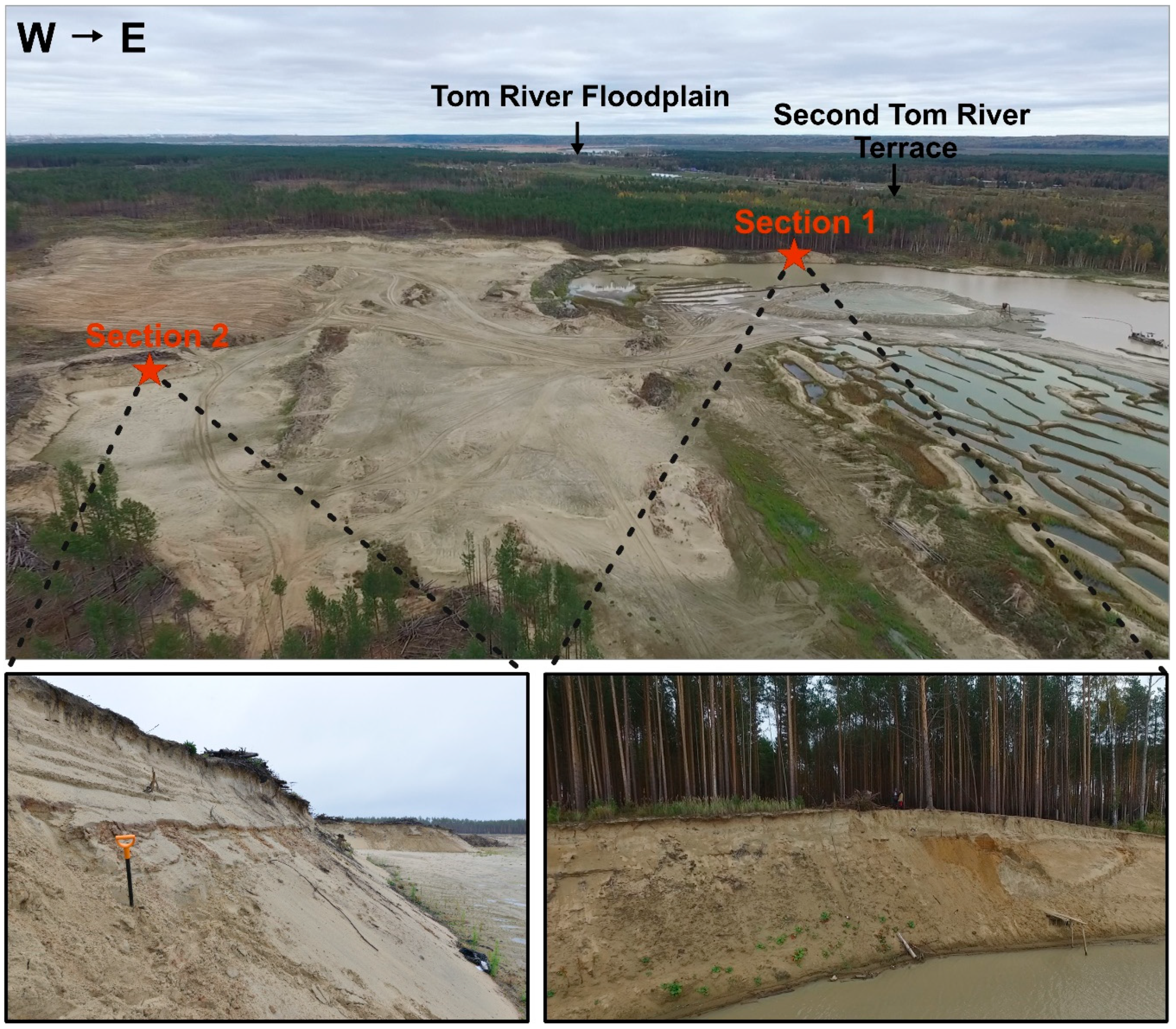
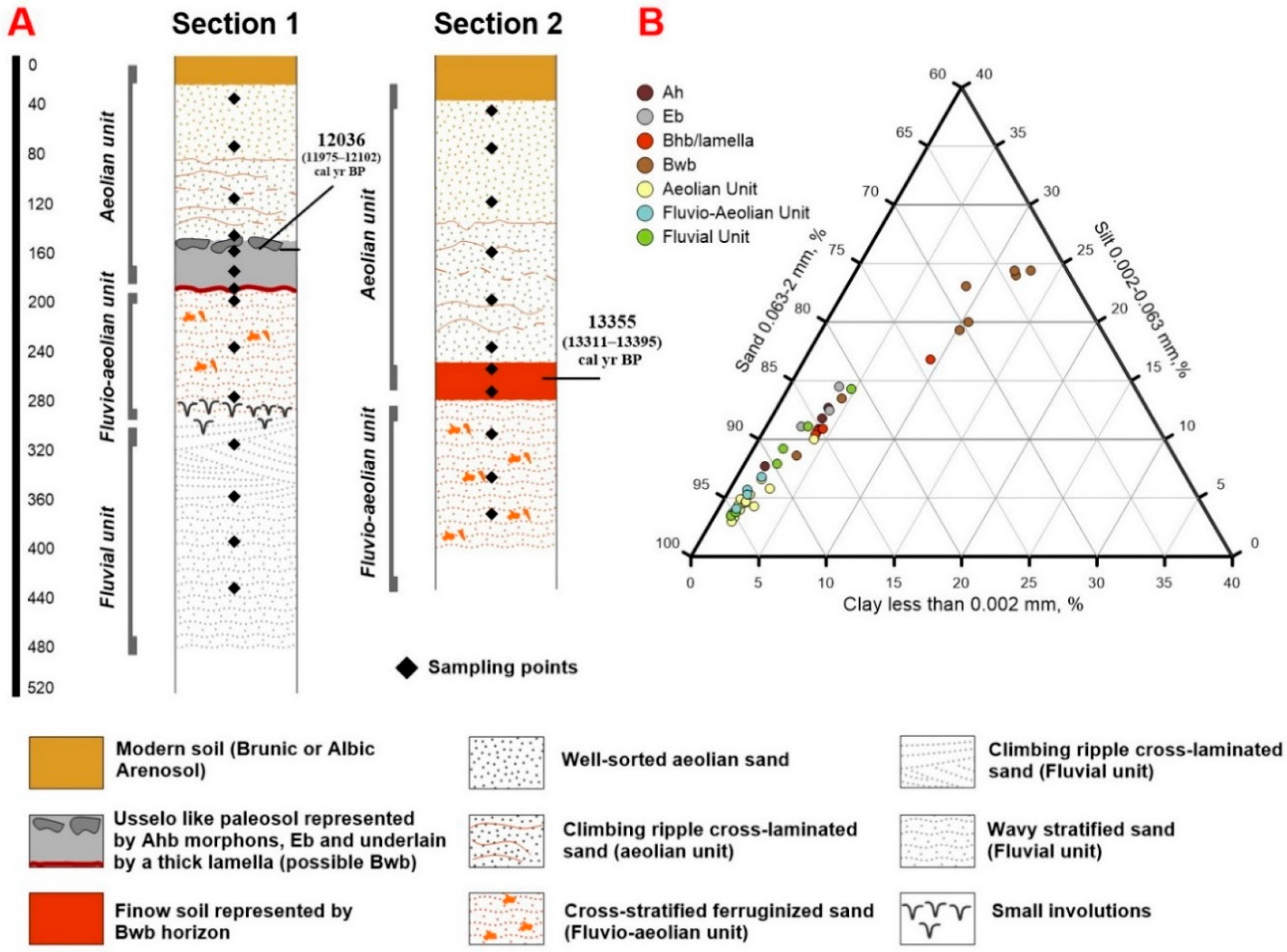


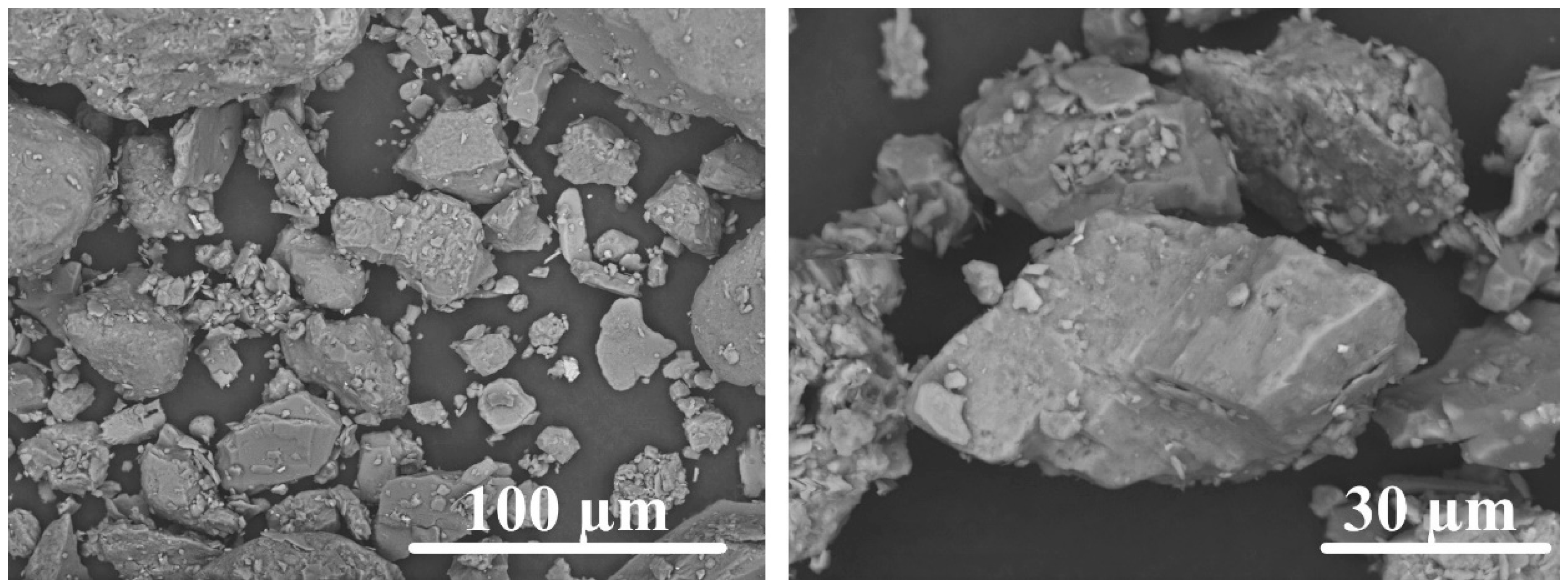
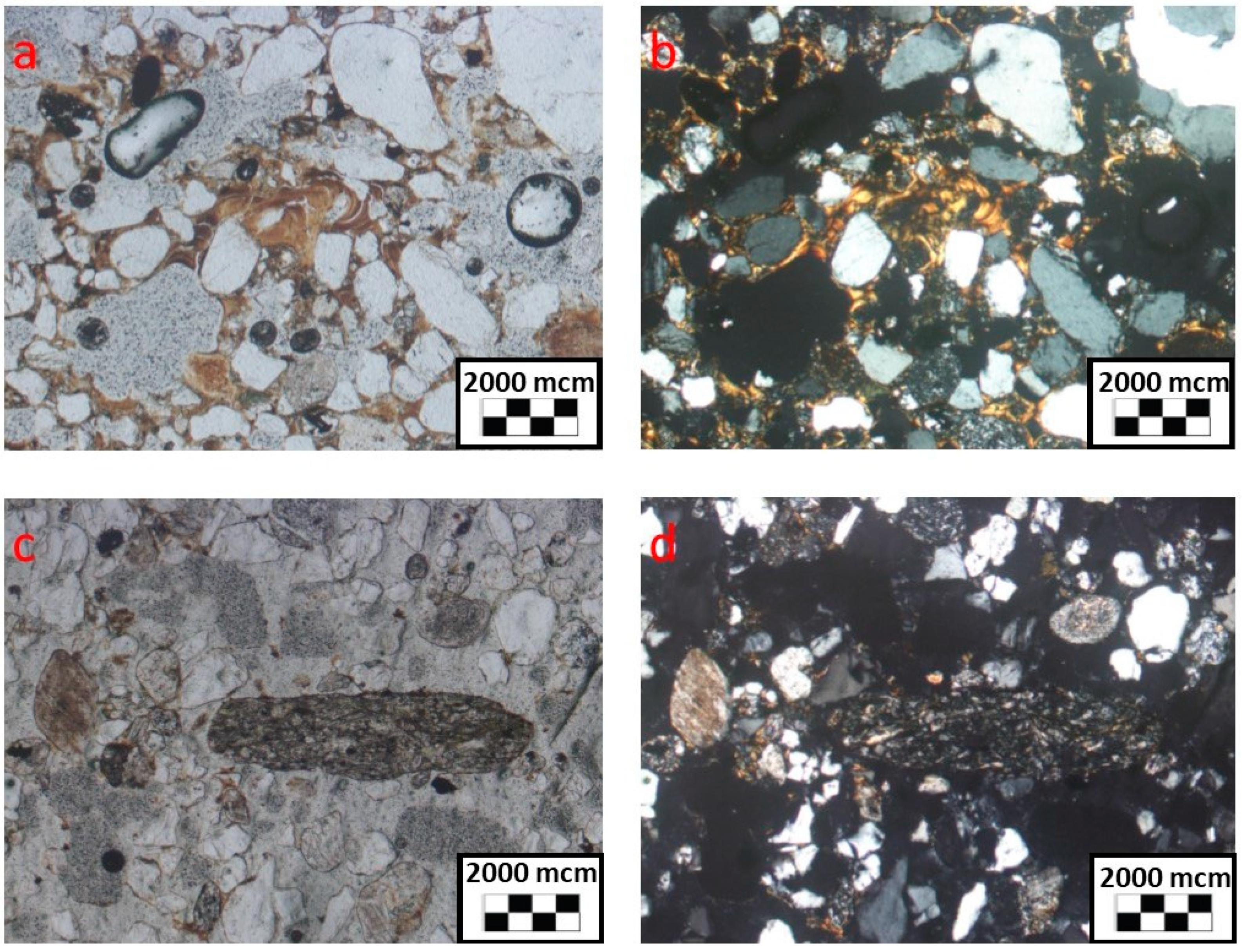
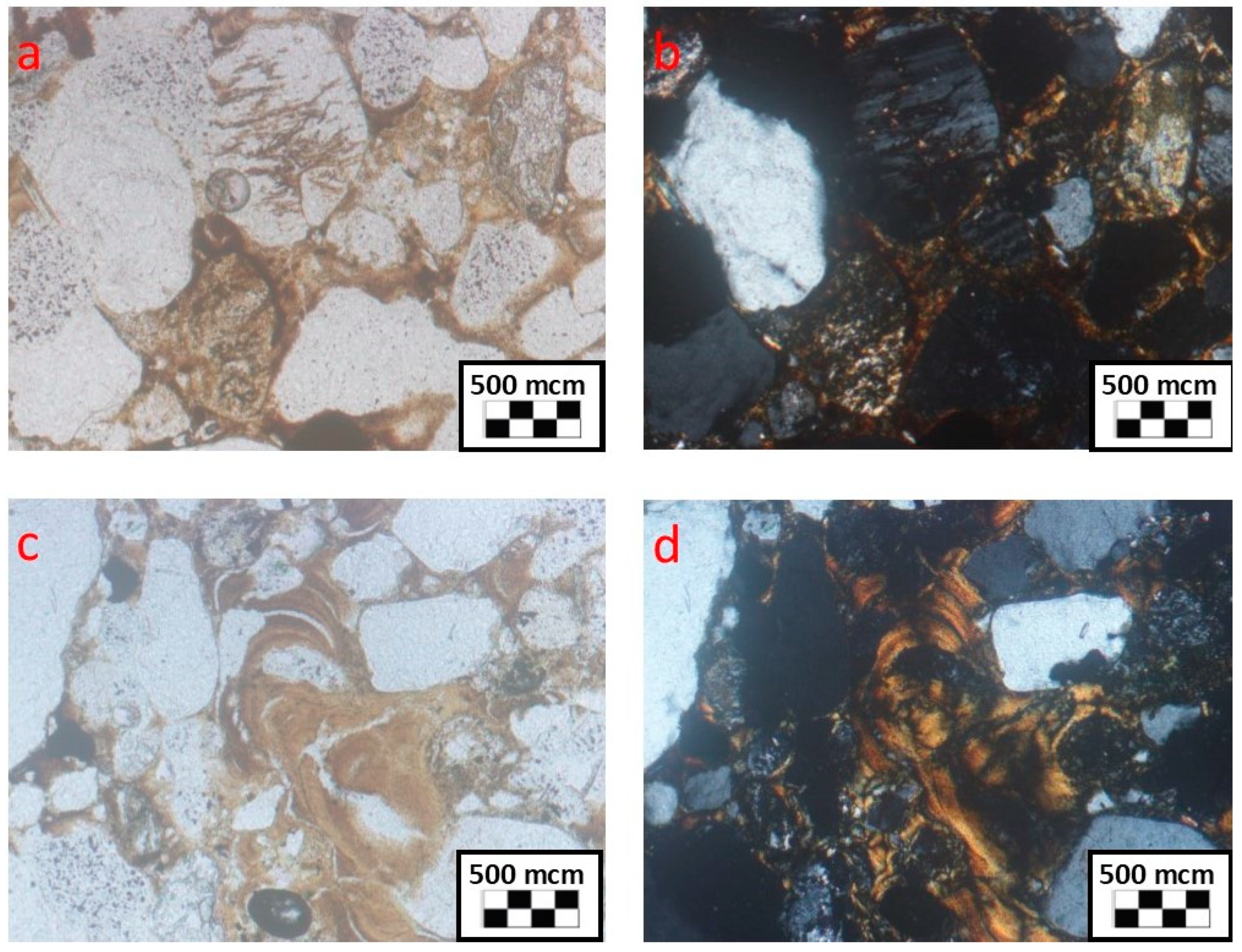

| Horizons | Depth, cm | Grain Size Fractions, % | ||||||||
|---|---|---|---|---|---|---|---|---|---|---|
| >0.0002 mm | 0.0002–0.002 mm | 0.002–0.02 mm | 0.02–0.05 mm | 0.05–0.1 mm | 0.1–0.25 mm | 0.25–0.5 mm | 0.5–1.0 mm | 1–2 mm | ||
| Paleosoil 1 | ||||||||||
| Ceol | 140–155 | 0.3 | 1.3 | 2.3 | 0.2 | 5.5 | 79.5 | 6.0 | 5.0 | 0.0 |
| Ahb | 155–165 | 0.6 | 3.2 | 6.6 | 0.8 | 14.6 | 69.1 | 3.0 | 2.0 | 0.0 |
| Eb | 165–176 | 0.3 | 0.9 | 1.4 | 0.2 | 6.9 | 81.1 | 5.0 | 4.2 | 0.0 |
| Bwb/lamellae | 176–180 | 1.2 | 8.1 | 12.9 | 0.5 | 8.8 | 63.7 | 3.3 | 1.5 | 0.0 |
| C | 180–190 | 0.5 | 1.3 | 1.9 | 0.4 | 8.8 | 80.8 | 3.8 | 2.6 | 0.0 |
| Paleosoil 2 | ||||||||||
| Ceol | 240–260 | 0.3 | 1.4 | 2.4 | 0.2 | 6.4 | 76.9 | 7.3 | 5.1 | 0.0 |
| Bwb | 260–267 | 0.6 | 3.8 | 7.9 | 0.8 | 13.3 | 66.8 | 3.4 | 2.3 | 1.1 |
| Bwb | 267–271 | 1.3 | 10.7 | 16.8 | 1.3 | 12.9 | 53.6 | 2.1 | 1.3 | 0.0 |
| Bwb | 271–276 | 1.3 | 9.2 | 12.2 | 1.4 | 13.2 | 58.3 | 2.8 | 1.6 | 0.0 |
| C | 276–296 | 0.3 | 1.4 | 2.4 | 0.2 | 6.4 | 76.9 | 7.3 | 5.1 | 0.0 |
| Horizons | Depth, cm | Color | LOI, % | C org, g kg−1 | N, g kg−1 | C/N | pH | Feo, g kg−1 | Fed, g kg−1 | |
|---|---|---|---|---|---|---|---|---|---|---|
| H2O | KCl | |||||||||
| Paleosoil 1 | ||||||||||
| Ahb | 155–165 | 10YR 7/2 | 2.0–2.4 | 0.4–0.7 | 0.3–0.5 | 1.2–1.4 | 5.8–6.0 | 5.0–5.7 | 0.01–0.10 | 1.3 |
| Eb | 165–167 | 10YR 7/1 | 1.5–1.9 | 0.6–0.8 | 0.1–0.2 | 3.0–6.5 | 5.7–6.0 | 4.7–5.0 | 0.01–0.02 | 0.5 |
| Bsb/lamellae | 167–177 | 10YR 6/3 | 1.9–2.7 | 0.6–0.8 | 0.3 | 1.8–2.6 | 5.9–6.0 | 5.7–4.9 | 0.15–0.34 | 5.0 |
| Paleosoil 2 | ||||||||||
| Bwb | 240–247 | 10YR 5/4 | 2.6–2.7 | 1.4 | 0.3 | 3.5 | 6.0–6.1 | 4.9–5.0 | 1.09–1.20 | 16.5 |
| 247–251 | 10YR 5/4 | 2.5–.2.7 | 1.3–1.4 | 0.3 | 4.6–4.7 | 5.9–6.0 | 4.1–4.5 | 0.90–0.94 | 10.8 | |
| 251–256 | 10YR 5/4 | 2.9–3.7 | 0.9–1.6 | 0.2–0.3 | 5.7–6.1 | 5.4–5.5 | 4.4–5.5 | 0.88–1.01 | 11.2 | |
| Sample | Lab Number | Sample Type | 14C, BP (1σ) | pMC, % | Age cal yr BP (1σ) |
|---|---|---|---|---|---|
| Section 1 Ahb/Eb | IGANAMS-6085 | Charcoal | 10270 ± 30 | 27.857 ± 0.097 | 12036 (11975–12102) |
| Section 2 Bwb | IGANAMS-6084 | Charcoal | 11510 ± 30 | 23.860 ± 0.090 | 13355 (13311–13395) |
© 2019 by the authors. Licensee MDPI, Basel, Switzerland. This article is an open access article distributed under the terms and conditions of the Creative Commons Attribution (CC BY) license (http://creativecommons.org/licenses/by/4.0/).
Share and Cite
Konstantinov, A.; Loiko, S.; Kurasova, A.; Konstantinova, E.; Novoselov, A.; Istigechev, G.; Kulizhskiy, S. First Findings of Buried Late-Glacial Paleosols within the Dune Fields of the Tomsk Priobye Region (SE Western Siberia, Russia). Geosciences 2019, 9, 82. https://doi.org/10.3390/geosciences9020082
Konstantinov A, Loiko S, Kurasova A, Konstantinova E, Novoselov A, Istigechev G, Kulizhskiy S. First Findings of Buried Late-Glacial Paleosols within the Dune Fields of the Tomsk Priobye Region (SE Western Siberia, Russia). Geosciences. 2019; 9(2):82. https://doi.org/10.3390/geosciences9020082
Chicago/Turabian StyleKonstantinov, Alexandr, Sergey Loiko, Alina Kurasova, Elizaveta Konstantinova, Andrey Novoselov, Georgy Istigechev, and Sergey Kulizhskiy. 2019. "First Findings of Buried Late-Glacial Paleosols within the Dune Fields of the Tomsk Priobye Region (SE Western Siberia, Russia)" Geosciences 9, no. 2: 82. https://doi.org/10.3390/geosciences9020082






